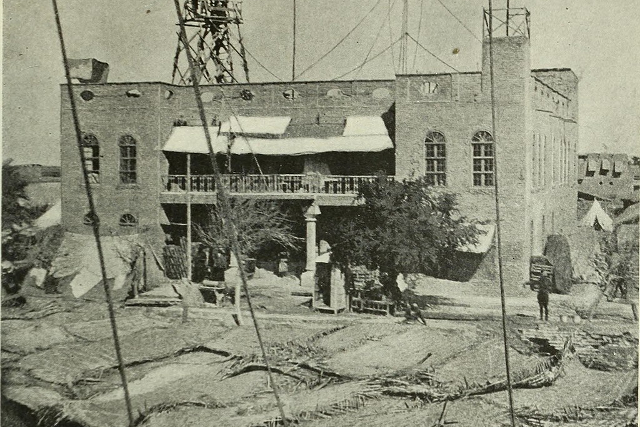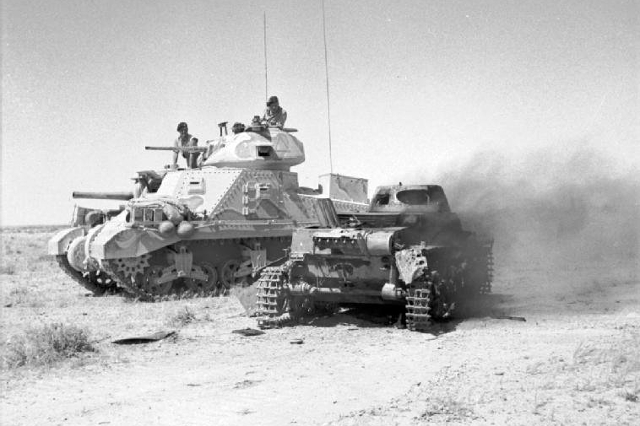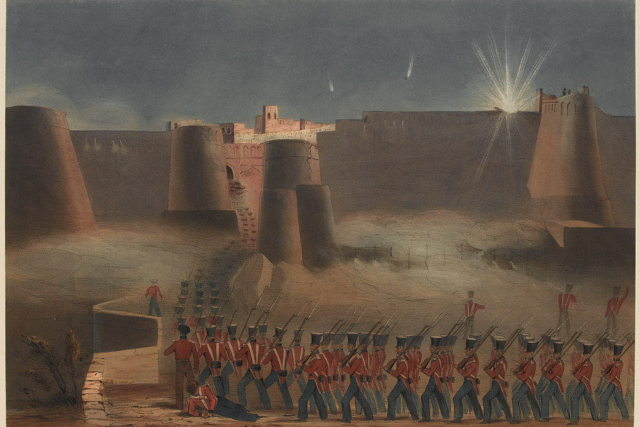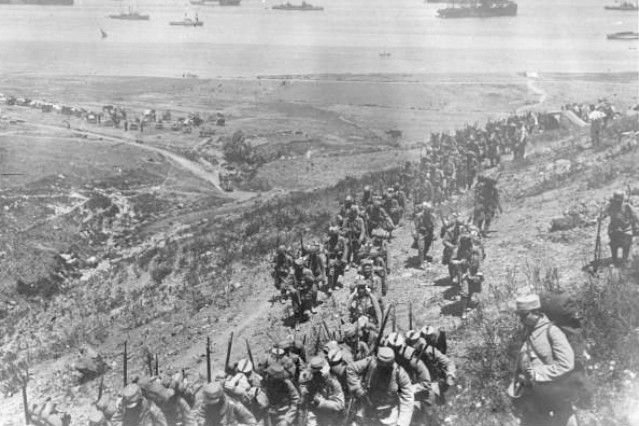The British Empire was the largest empire in history in terms of landmass, as well as one of the most formidable military powers in the world at its peak. From Napoleonic France to southeast Asia to the Americas, Great Britain was known for its spectacular successes on the battlefield, often against much larger, better-armed enemies.
Of course, you can’t win every battle you fight. Like every other powerful empire in history, the grand story of the British Empire also contains quite a few accounts of massive, catastrophic military upsets.
10. Battle Of Isandlwana

The Battle of Isandlwana was the first engagement of the Anglo-Zulu war – a major conflict in the south-eastern part of South Africa involving the Zulu kingdom and Great Britain. Fought on January 22, 1879, it would be one of the bloodiest defeats suffered by British forces at the hands of a native army, despite their considerable superiority in military technology.
Armed with rockets and state-of-the-art breech loading rifles – compared to old school melee weapons like pikes and spears on the Zulu side – the British forces were caught off guard by the sheer number of the Zulu army. Lord Chelmsford, who led the attack, vastly underestimated their will to fight, too, and by the end of the day, a big chunk of the British force was decimated.
It was the first battle of the Anglo-Zulu war, and while the Zulus were eventually defeated after a six-month campaign, the battle at Isandlwana is still counted as a major British defeat in colonial-era Africa. It was a part of the larger British efforts to form a South African confederation in the region, directly challenging the autonomy of multiple, ethnically-diverse African states like Zululand.
9. First Anglo-Boer War

The First Anglo-Boer War – also known as the First Transvaal War of Independence, or the Transvaal rebellion – could be seen as an extension of the global British-Dutch rivalry at the time, though the Boers weren’t actually Dutch citizens. While they did predominantly come from a Dutch lineage and spoke Dutch as their first language, Boers included descendants of settlers from all over Western Europe.
British incursions into Boer territory started long before the war, though it was the annexation of Transvaal in 1877 – one of the territories governed by the Boers – that really triggered it. The war – or more accurately the rebellion – began in December 1880, pitting the British empire against an equivalently armed and well trained enemy.
As you can guess from the general theme of this list, it didn’t go too well for the British. The Boers turned out to be much better at fighting in that terrain, as they regularly used firearms for hunting. They had much better weapons and tactics, too, and the British forces were regularly faced with mobile, mounted groups of riflemen.
The war ended with the decisive battle of Majuba Hill in February 1881, when the Boers successfully stormed the British position of Majuba Hill manned by over 400 soldiers. More than 22,000 British soldiers lost their lives throughout this campaign, with over 6,000 casualties on the Boer side.
8. Siege Of Kut

The Battle of Kut was fought during the Mesopotamian campaign of the First World War. About 100 miles southeast of Baghdad, Kut was then a strategically crucial town due to its proximity to oil – a resource that would change warfare forever.
On December 7, 1915, the Ottoman army laid siege to the town, garrisoned by a British force of about 10,000 soldiers. While it was later strengthened by a relief contingent of about 30,000 soldiers, the siege would still end in a disaster for the Brits.
In an almost five-month-long siege, Ottoman forces – despite being overwhelmingly outnumbered – killed more than 30,000 British soldiers, making it one of the deadliest military engagements in British history. More than 13,000 soldiers were taken prisoner by the end of it, including six generals and 476 officers.
7. Battle Of Tug Argan

The East African campaign of WW2 is a largely forgotten phase of the war, and perhaps rightly so, too. Mostly controlled by the British, the region had little strategic value for either side, though it still saw some of the heaviest fighting of the war outside the main European and Pacific theaters.
The Battle of Tug Argan was an early fight during the campaign, fought between Italian and British forces on August 11, 1940. It was a lightly defended position, as they didn’t expect Italian forces to venture so far into British-controlled territory for an outpost that could at best be described as ‘occasionally hospitable’. It was, however, great for morale among Italian troops, which could come in handy elsewhere.
Despite their heavy fortifications, the British forces were overrun within less than five days, though at a high cost for Italy. Despite their numeric advantage, the Italian force lost over 2,000 soldiers that day. British casualties numbered around 250, as they successfully managed to retreat from the position before it was stormed.
6. Battle Of Gazala

The Gazala line refers to a heavily fortified Allied position that had developed west of Tobruk – a port city in Libya – during the North African campaign of WW2. Its primary purpose was to hold the city, which had been put under siege by German and Italian forces during the earlier phases of the campaign. By May 1942, the line was manned and defended almost entirely by the British Eighth Army; a formation especially trained for combat and reconnaissance in the desert, even if that would do little to stop the Axis war machine. Well, at first, anyway.
On May 26, the 50-mile-long line came under heavy attack from Italian and German forces led by Erwin Rommel, also known as the Desert Fox for his achievements in this theater. By even conservative estimates, the British formation – made up of soldiers from its colonies and the Free French Republic – numbered close to 175,000, outnumbering Rommel’s force by more than 2:1.
While the defenders proved to be stubbornly resistant, the Eighth Army was eventually unable to maintain its supply lines, unlike Rommel, who was regularly supplied by the Italian command centers in Libya and across the Mediterranean. Tobruk fell on June 21, and the remaining Allied forces were surrounded and forced to retreat across the Egyptian border. Over 50,000 soldiers lost their lives throughout this battle, and about 35,000 were taken captive, compared to a loss of about 3,300 soldiers for Germany and Italy.
5. The Medway Raid

The Dutch raid on the Medway dockyards in 1667 came at the worst time possible. Just on the heels of the Great Fire of London and a devastating outbreak of the bubonic plague that killed upto 100,000 people, the country was also engaged in an increasingly intense war with the Dutch. The raid, however, would prove to be its most intense and devastating phase.
Unlike the latter years of the empire, this was a time when other maritime empires – like the Dutch and Portuguese – posed a considerable challenge to the Royal Navy. The raid started on June 12, when Dutch ships passed the defensive chain on British shores and proceeded to lay waste to the entire docks. Many fortifications, smaller boats and canon batteries were destroyed, in exchange for minimal losses for the Dutch. The destruction was so massive that it looked like the sea was on fire, and by the end of it, the Dutch had captured four ships, including HMS Royal Charles. It was easily the largest British defeat on home soil, and it would take years before the Royal Navy was restored to its full capacity.
4. Battle Of Carillon

The Battle of Carillon was a part of the larger French and Indian War, which was in turn a part of the larger Seven Years’ War between Britain and France. Fought at Fort Carillon – a well defended French position between Lake George and Lake Chaplain in New York – it would see some of the heaviest fighting of the war.
The battle began on July 6, 1758. Despite the overwhelming numerical superiority of the British contingent, it would hardly take a couple of days for the French – allied with various native groups in the region – to drive them away. By even the most conservative estimates, the fort was stormed by at least 15,000 British soldiers, compared to about 3,600 French defenders.
While the British troops were well-trained and battle-ready, the attack was made without the use of artillery, resulting in heavy losses and a quick defeat. By the end of it, more than 2,000 British soldiers were killed or wounded in the attempt, compared to just over 300 casualties on the French side.
3. First Anglo-Afghan War

British forces from India invaded Afghanistan in March 1839, marking the beginning of the first Anglo-Afghan War. It was a part of a larger cold war brewing between Russia and Britain for much of the 19th century. If Afghanistan was invaded by Russia, they feared that it could be then used to launch an invasion of British-held India – by then one of the most lucrative colonial enterprises in the world.
The invasion force was made up of 20,000 soldiers, along with a caravan of about 38,000 civilians hoping to resettle the country after it was smoothly taken over, like it usually went for the Brits. That’s what happened, too, at least during the first phase. The British war machine was able to topple the existing emir – Dost Mohammad – with relative ease by August 1839, replacing him with the puppet, pro-British ruler, Shuja Shah.
While it was an easy place to conquer, Afghanistan would prove to be an impossible territory to hold. For more than two years, British forces in Kabul fought a violent insurgency on all sides, including murders of a few high profile British officers inside Kabul. With a vastly outnumbered force – as most of the initial members of the caravan had already moved back home to India – the British force began a retreat in January 1842 with a total of about 16,000 people. It would turn into a massacre, as the whole column was harrassed and attacked by Afghan fighters until they reached Jalalabad. By ‘they’, we mean ‘him’, as only one British officer was able to survive this ordeal, as the entire column was decimated on the way.
2. Gallipoli Campaign

The Gallipoli campaign during WW1 aimed to strike at the heart of the Ottoman empire – Istanbul. The allied force was massive – over 480,000 troops took part in the campaign, though most of them would never make it back. A bulk of it was British troops, along with smaller contingents from Australia, New Zealand, Russia and other allied countries.
The overall objective was to achieve complete allied superiority over the Gallipoli peninsula, which could then be used as a base for direct attacks on Istanbul. Despite heavy losses of the Royal Navy under the command of Winston Churchill – then the First Lord of Admiralty in the British Navy – the allies managed to capture a few positions on the beach in February, 1915, which would soon be turned into a network of trench lines similar to those in Europe.
For about a year, the allies tried to maintain their positions, though they were no match for the entrenched and well-equipped Ottoman force. Moreover, they were able to reinforce their positions much faster than the allies, who were also suffering from deadly outbreaks of diseases like dysentery.
The allied force capitulated in January 1916, though only after suffering heavy losses. Both sides suffered over 250,000 casualties, though some estimates put that number even higher.
1. Battle Of Singapore

When WW2 broke out in the east, Singapore was easily one of the most heavily-defended British strongholds in the region. They had spent much of the inter-war period strengthening its defenses, especially in the navy department, as it was vulnerable to attacks from the rapidly-militarizing Japanese empire. When the Japanese did attack, however, all that would do little to stop it.
The assault began on February 8, 1942, when Japanese forces – numbering over 23,000 – landed on the island and established a beachhead. While the British outnumbered them by over 3:1, the Japanese had almost complete air superiority over the region, thanks to their earlier territorial gains in Malaysia. The infantry divisions were no match for the elite Japanese units, either, and by February 15, the entire British-led force was forced to surrender. Over 90,000 allied combatants were taken prisoner that day, many of whom would later succumb to the horrors of a Japanese POW camp.
1 Comment
Mohamed Abdellah Hassan defeated the British Army twice, the first, at the onset of WWI in Somalia, was a total shattering, at Kadaryieh, he only surrednered in 1922, long after WWI was over globally after a heavy air bombardment of his headquarters, the inattackable Fort Taalex.
The defeated had for a few years no better answer than calling him ‘the Mad Mulah’.
Google ‘Fort Taalex’, see the technology implied, the Emperor of Ethiopia had assisted in its erection.
It is just a classic, African history, even recent, is purposely forgotten, no fault to this attentive blog, it just is so, worldwide. Not here in Ethiopia, we know better.